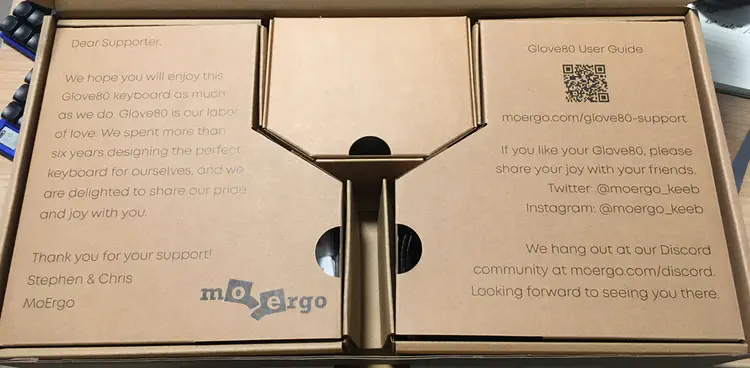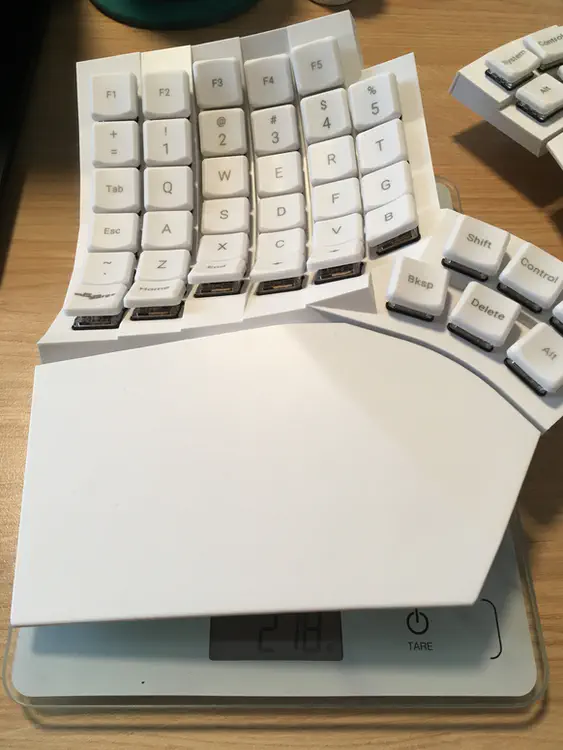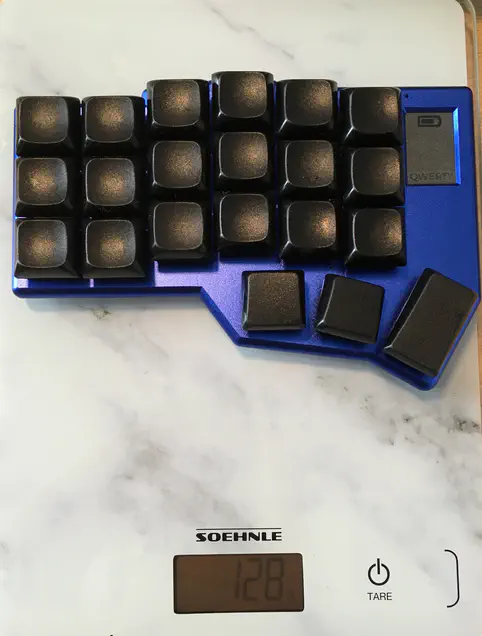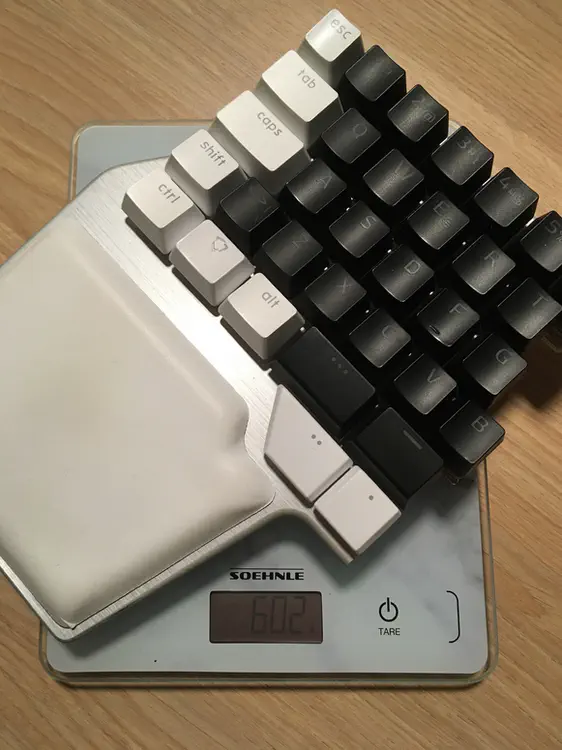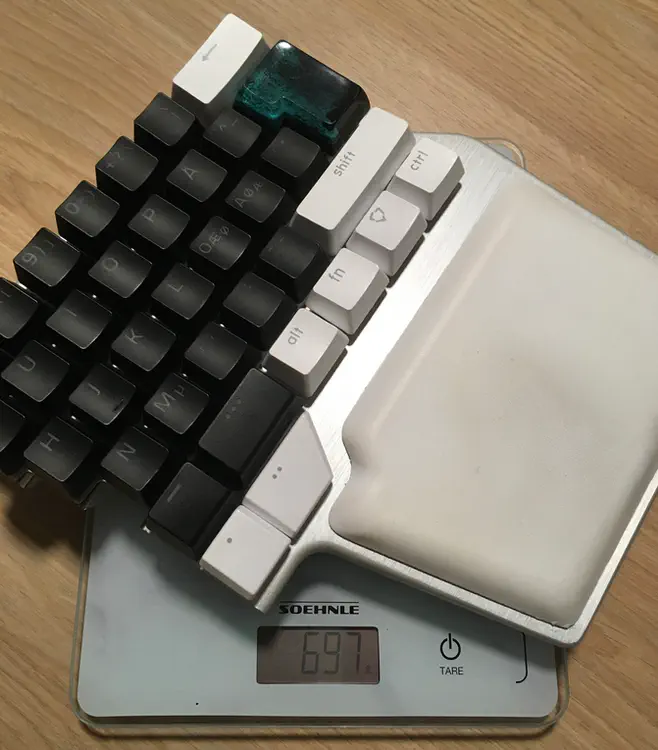Glove80 First Impressions
Glove80 is an ergonomic split contoured keyboard designed and produced by MoErgo. I backed the Kickstarter just over a year ago and got the parcels Friday afternoon. I haven’t yet had a chance to look at them, so without further ado, let’s see how it is!
The box is not very tall at only 6.8 cm! That’s promising for portability, which is one of their selling points. Also, having seen some prototype pictures, it is really cool to see the box in person!
Opening up the middle “sub-box” there are some keycaps in reusable containers (packed tight – they almost jump out when opened). In these we get:
Some fun faces (great choice of typeface ^^)
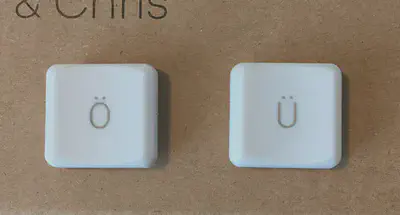
Danish/Nordic specific keycaps, as well as German and British specifics. This is great for those of us who don’t type on a US/ANSI layout!
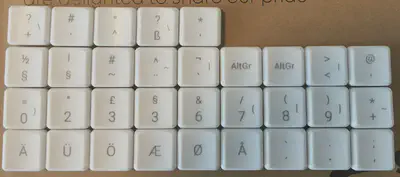
Anyway, on to unpacking the actual keyboard? Not quite yet, because it turns out there are hidden compartments inside each half sub-box! Here we find:
- Apple-specific keycaps.

- A USB-A to USB-C cable.
- Threads, bolts, and mini-wrench for tenting by increasing the leg lengths.
- What are presumably tenting spacers, some extra rubber feet, and a keycap
puller.
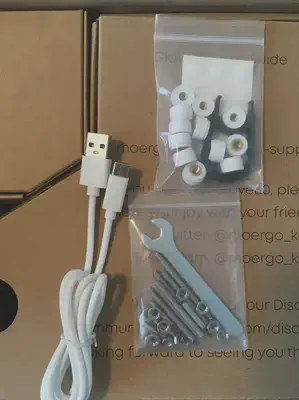
- And a USB-A to split USB-C cable, for attaching the two halves to the same
USB-A port on your PC.
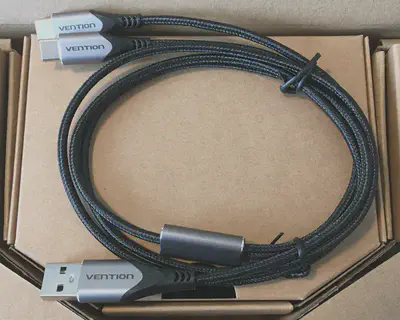
And now the main thing, the keyboard! The first words that spring to mind are “compact” and “elegant”. I think the keyboard looks amazing in white, looking neat and refined with sharp edges nicely contrasting the smooth look of the keywell and palm rest. I recently visited the Vitra Design Museum, and in my opinion the Glove80 looks like something that could fit right in amongst the other stuff there.
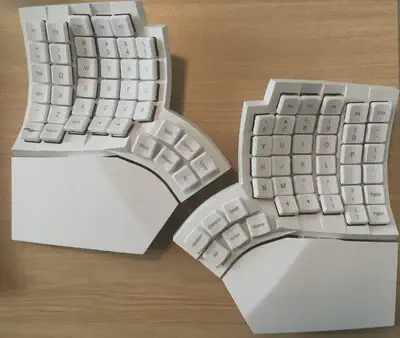
I travel a lot, usually taking my keyboard with me, including carrying it to and from work in my backpack, so portability is very important for me. How much does it weigh? 278g per side, 556 grams total. That’s highly respectable for a keyboard that size! For a bit of context, the Corne-ish Zen weighs 138g per side, a pair of Bose QC25s weigh 450g (case included), and the left and right halves of an ISO Dygma Raise is roughly 600g and 700g respectively. (No wonder my shoulders hated me back when I was lugging that around…)
When comparing to the Zen, it is worth remembering that the Glove80 has almost twice as many keys as the Zen per side (40 vs 21), so having the keyboard’s mass be nearly exactly twice seems fair enough (impressive even, since the Zen has an aluminium top-plate, which presumably adds mass).
Looking at the keyboard itself, it seems decently tented as part of the design; probably about 5° or so. This was mentioned in the FAQ or Discord at some point, since tenting improves ergonomics, but again, seeing it in person is different.
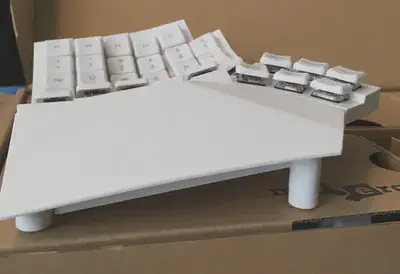
Before “trying on” the keyboard, I first wanted to measure my hand size. This should hopefully help you, the reader, translate my observations to your own hands, and it is another data-point in the ergonomics world, which is always nice. Measuring from the base of my palm to the tip of my middle finger, my hand is around 17 centimetres (cm), and around 13.5cm from the base of my palm to tip of my pinky.
It seems I’ll need to slightly adjust a habit I didn’t realise I had, because my
hands naturally go for the bottom of palm-rest, making my fingers rest on the
m , . - row, one row lower than they should be. With that fixed, I had to
remind myself of the fact that I’ve been using the Zen for the past month, which
is a 42-key keyboard, so things initially felt far away. But only because the
Zen is so unusually compact! The Glove80’s bottom 4 rows (letters and navigation
keys) are easy and comfortable to reach, the number keys require a bit of a
stretch (as they would on a flat keyboard), and function keys require me to move
my hand up a bit. However, here’s the first noticeable difference is useability:
I have to move my hands less than on a regular keyboard to reach the function
keys!
The elevated pinky rows are great, and so much more comfortable than if they had
been lower. However, they reveal that there are “bad” habits that do not work
on the Glove. Your ring finger can technically reach the ‘P’ key, but it’s not
comfortable, nor easy. I’ll need to “fix” my typing for that one… I also don’t
know if my pinkies are just abnormally short, but I can’t comfortably reach the
0 key. And forget about - _, and F10 keys.
Speaking of F-keys, you may have noticed there’s a corner cut out, so that you only get 10 F-keys and not 12. I personally don’t mind the cut-out key. It would be similarly out of reach for me, and it would be the tallest key on the board. So if that’s the cost to get the height down, that’s fine by me.
Moving on to the thumbkeys, the closest 4 are comfortably in reach for me. The
bottom row is the closest one for my hand/typing position, but I have heard some
people say the top one is closest, so your mileage may vary. Bottom-furthest
(i.e. “furthest” from the main body of the keyboard) is a stretch, but doable.
And the top-furthest requires moving my hand to reach. Also, I’ve noticed the
only (minor) inconvenience with the nice sharp edges: the corner next to the
thumb keys is not sharp enough to accidentally stab yourself on, but it’s
also not not that ^^;;
It was probably necessary to be able to fit the PCB for the index-finger column
though; a necessary, and again, minor, evil.
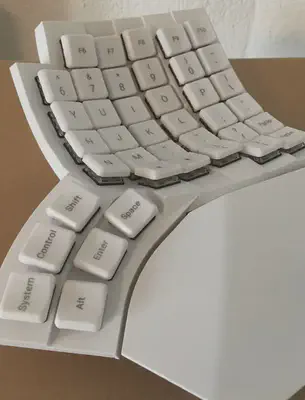
In terms of physical properties, the keyboard feels very solid, with neither the palm rest nor main body deforming when trying to twist them. The keyboard is stable, even when “hammering” the keys as might happen when you need to step away from the keyboard for a bit before replying, or during a frustrating coding session, an intense Dota match, or similar. (I’m sure you know the feeling I mean.) The rubber feet under each of the 6 legs at the bottom work perfectly for keeping the Glove in place and not sliding around.
Finally, I tried removing the thumb screws which hold the palm rests in place. They needed loosening with a screwdriver, presumably to keep things firmly in place during shipping, but after that they were easy to unscrew. The thumb screws are captive (and spring-loaded?) which is great since it means I don’t have to worry about them suddenly disappearing into the ether. As is to be expected, the keyboard is a bit lighter without palm rests, each side weighs around 229 grams without them. I think I’ll be using mine with; it’s the most comfortable configuration, in my opinion.
Closing thoughts
The Glove80 looks elegant, and feels robust and thought-through. In terms of portability, I think the total mass is excellent for a keyboard this size, especially when I look at behemoths like the Kinesis Advantage, or competitors like the Advantage 360 or the Dygma Defy. There will clearly be a learning curve, but this is to be expected for my first keyboard with keywells, and I’m looking forward to the challenge.
I am going to experiment with the tenting and layouts over the coming weeks, taking a similar approach to when I got the Zen of “this is my only keyboard now” and seeing how that goes. I’ll try to report back in about a month, but life has a tendency of getting in the way of me being able to write blog entries, so we’ll see about that.
P.S.
My partner also had a brief try and said it would take some getting used to. She can touch-type, but the three-dimensionality of the keyboard was confusing to her and meant she needed to look at the keys to know what letters her fingers were on. This is probably worth bearing in mind if you would be switching from a good old standard flat keyboard. The keys were comfortably in-reach for her as well though. And, to add another data-point, her hand size is 16cm (palm base to tip of middle finger). She also noticed the pinky vs ring finger “issue”: typing the word ‘pool’, for example, is awkward (or maybe just different) on the Glove.

